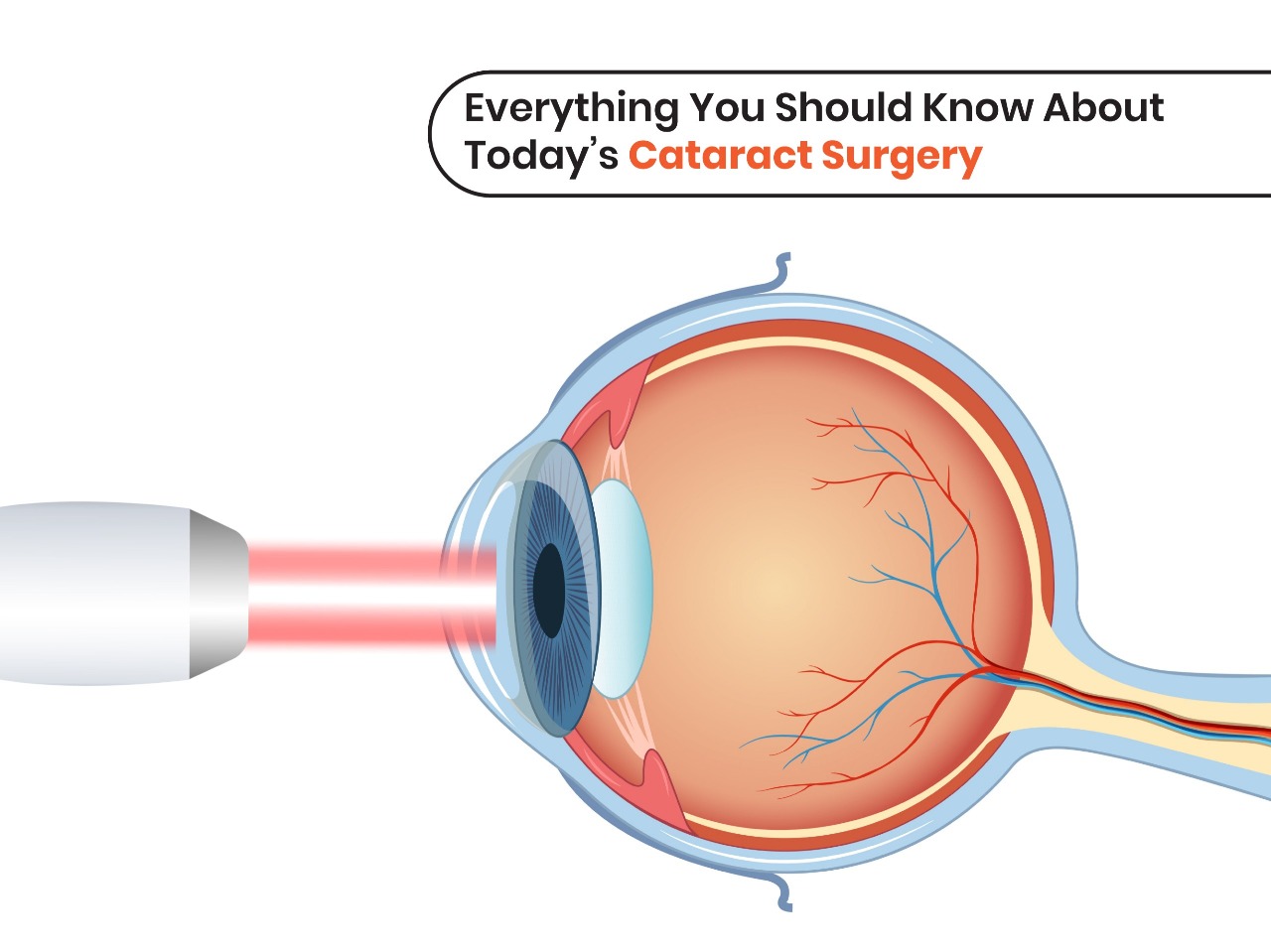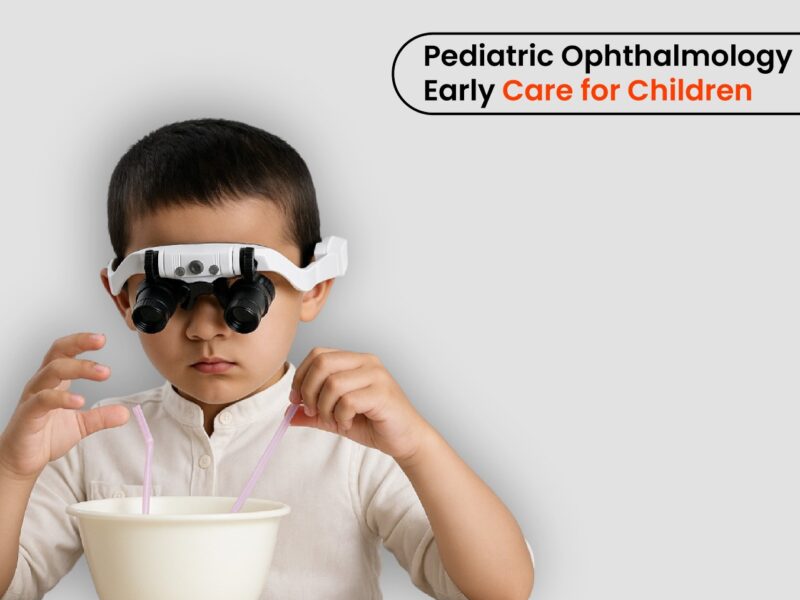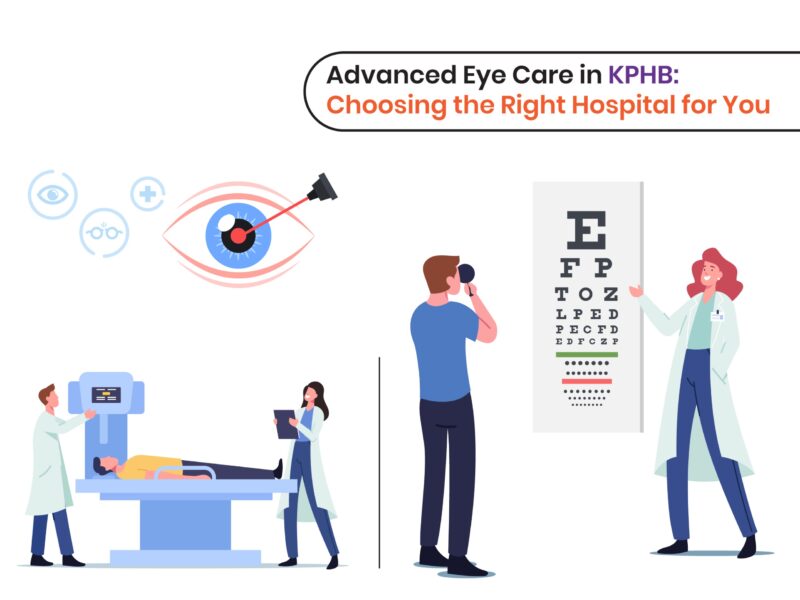Best Cataract Surgery in KPHB Kukatpally, one of the most common age-related eye conditions, affect millions of people around the globe. As we grow older, the natural lens of the eye can gradually become cloudy, causing blurred vision and reduced clarity. Thankfully, advancements in ophthalmic technology have made cataract surgery a safe, effective, and minimally invasive solution with phacoemulsification leading the way as the most widely used modern technique.
Medivision is a trusted eye care center recognized for offering advanced cataract surgery using state-of-the-art equipment and highly experienced ophthalmologists. With a team of skilled surgeons and cutting-edge medical technology, the institute ensures safe, precise, and reliable treatment for patients dealing with cataracts. Over the years, Medivision has earned a strong reputation for restoring vision and improving quality of life for thousands of individuals.
What causes cataracts
The way smudgy lenses cause blurring of vision, our natural lens loses its transparency over time. Proteins in the lens begin to break down and clump together, creating cloudy areas that block light. These cloudy areas start small but grow larger, making vision increasingly hazy. The lens may also develop a yellowish or brownish tint, changing how we see colors.
Factors That Accelerate Cataract Formation
Several conditions and lifestyle habits can increase the risk of developing cataracts more quickly:
Diabetes and uncontrolled blood sugar levels
Previous eye injuries or surgeries
Long-term use of corticosteroid medications
Excessive exposure to UV radiation
Lifestyle choices also play a crucial role. Habits such as smoking, excessive alcohol consumption, and prolonged exposure to sunlight without proper eye protection can significantly speed up cataract progression.
Stages of Cataracts
Cataracts typically progress through different stages ranging from early onset to advanced levels. These include the initial (early) stage, immature stage, mature stage, and hypermature stage. Let’s take a closer look:
Stage 1 – Initial (Early or Incipient) Cataract
This stage often appears in younger individuals. Small cloudy patches begin to form on the lens, but vision usually remains clear. Symptoms may be minimal or hardly noticeable, though some people experience:
Mildly blurred vision
Greater sensitivity to bright light
Frequent eye strain
Duller or less vibrant colors
Stage 2 – Immature Cataract
At this point, the lens becomes partially clouded, allowing only some light to reach the retina. Vision changes become more noticeable, though complete vision loss does not occur at this stage.
Common symptoms include:
Noticeable blurriness
Difficulty seeing in dim light
Increased glare or halos around lights
Faded or washed-out colors
Stage 3 – Mature Cataract
At the mature stage of cataract, the lens becomes fully opaque, dense, and significantly clouded. This prevents most of the light from reaching the retina, which results in severe vision impairment. Daily activities such as reading, writing, or driving become extremely difficult and, in many cases, nearly impossible without medical intervention.
Typical symptoms associated with this stage include:
Noticeable and significant vision loss
Difficulty in performing tasks such as reading and driving, even with corrective lenses
Double vision affecting one eye
Bright halos or rings of light around light sources, especially at night
Stage 4 – Hypermature or Overripe Cataract
The hypermature, also known as the overripe stage of cataract, is the most advanced form of the condition. At this point, the lens begins to shrink, harden, and deteriorate, often leading to serious eye complications. The advanced changes not only affect clarity of vision but also put the overall health of the eye at risk.
This stage is commonly associated with the following symptoms:
The lens turning completely white in appearance
Profound and severe vision loss
Vision reduced to the point where one can only count fingers at close range
Elevated intraocular (eye) pressure, which can trigger secondary complications
Possible dislocation of the lens nucleus due to structural changes
If you notice any of these symptoms, it is crucial to seek immediate medical attention. Medivision, with its team of the best cataract surgeons in KPHB, offers advanced treatment options to help restore vision and protect long-term eye health.
How to Detect Cataract Progression
Detecting cataract progression involves a combination of being aware of changes in your vision, scheduling regular eye examinations, and recognizing specific warning signs. Symptoms such as cloudy or blurred vision, poor night vision, halos appearing around light sources, and heightened sensitivity to light are some of the most common indicators of cataract progression.
Below are several methods through which an eye hospital in KPHB can help in identifying and monitoring cataract progression:
Eye Exams and Diagnostic Tools
Routine Eye Check-Ups: Regular eye examinations conducted by an ophthalmologist are crucial. These check-ups can detect cataracts during their earliest stages, even before noticeable symptoms develop, allowing for timely treatment.
Slit-Lamp Examination: A slit lamp is a specialized microscope used by ophthalmologists to examine the eye’s lens and other internal structures in detail. This test provides a clear view of the cataract and helps track its development over time.
Retinal Examination: A retinal exam allows the ophthalmologist to assess the health of the retina. By dilating the pupil, the doctor can evaluate whether cataracts are interfering with light reaching the retina and determine the severity of the condition.
Signs Your Cataract Is Getting Worse
Cloudy or blurred vision – lens becomes opaque, blocking light.
Faded or yellowed colors – colors appear dull or washed out.
Halos and glare – scattered light causes halos or streaks, especially at night.
Double vision in one eye – uneven lens clouding creates overlapping images.
Poor night vision – difficulty driving or seeing in dim light.
Increased light sensitivity – bright light feels uncomfortable or painful.
If you notice these symptoms, consult Medivision, the best eye hospital in KPHB, for expert cataract care and treatment.
Traditional Cataract Surgery
In earlier times, cataract surgery was performed using a method known as extracapsular cataract extraction (ECCE). This traditional approach required a large incision in the eye to remove the cloudy lens. As a result, recovery was slower, the healing process took longer, and the risk of complications was significantly higher. After undergoing ECCE, many patients often needed to rely on thick corrective glasses to compensate for the major refractive changes that occurred following the surgery.
The Evolution of Cataract Surgery
A breakthrough came in the 1960s with the introduction of phacoemulsification, which completely transformed cataract surgery. This modern technique, now widely adopted by the best cataract surgeons in KPHB, uses ultrasound waves to carefully break the cloudy lens into tiny fragments. These fragments are then gently suctioned out through a much smaller incision compared to older methods. Phacoemulsification not only ensures faster recovery but also reduces surgical risks and minimizes dependence on postoperative glasses, making it a safer and more effective alternative to traditional procedures.
What is Phacoemulsification?
Phacoemulsification, offered at leading eye cataract surgery hospitals in KPHB, is considered the gold standard for cataract removal today. Cataracts, which occur when the natural lens of the eye becomes cloudy due to age or other factors, can cause blurred or distorted vision. This advanced surgical method is both precise and minimally invasive. During the procedure, the cloudy natural lens is emulsified and removed, and then replaced with a clear, artificial intraocular lens (IOL). This artificial lens restores clear vision, allowing patients to regain visual clarity and enjoy an improved quality of life.
Step-by-Step Breakdown of the Phacoemulsification Procedure by the Best Cataract Surgeons in KPHB
Anaesthesia
Before the surgery begins, local anaesthesia is administered to numb the eye and ensure the patient does not feel discomfort during the procedure. In certain cases, mild sedation may also be given to help the patient remain calm and relaxed.
Incision
A very small incision, usually around 2–3 millimetres in size, is carefully made in the cornea. This incision acts as the entry point for the surgical instruments used throughout the procedure.
Capsulorhexis
A precise circular opening is created in the anterior portion of the lens capsule. This crucial step allows the surgeon to gain access to the cloudy lens so it can be removed effectively.
Phacoemulsification
A thin probe is inserted through the incision, and ultrasound energy is applied to break the cloudy lens into tiny fragments. This process, known as phacoemulsification, emulsifies the cataract material for safe and controlled removal.
Aspiration and Irrigation
The fragmented lens material is then suctioned out through the same probe. At the same time, a balanced salt solution is continuously introduced into the eye to maintain its shape, preserve clarity of the anterior chamber, and prevent collapse.
Intraocular Lens (IOL) Implantation
After the natural cloudy lens has been completely removed, an artificial intraocular lens (IOL) is carefully implanted into the lens capsule. This artificial lens replaces the original one, restoring clear and focused vision.
Incision Closure
In most cases, the incision is self-sealing and does not require stitches. The eye is left to heal naturally, ensuring a smooth and relatively quick recovery process
Key Advantages of Phacoemulsification
Minimally Invasive Technique
Phacoemulsification involves creating a very small incision, usually about 2–3 millimetres in size. Because it is a minimally invasive procedure, it causes less trauma to the eye, promotes faster healing, and lowers the chances of post-surgical infections.
Faster Recovery Time
Compared to older surgical methods, patients who undergo phacoemulsification often recover much more quickly. Noticeable improvements in vision are usually experienced within just a few days, enabling individuals to resume their daily routines sooner.
High Precision and Surgical Control
The advanced ultrasound technology used during phacoemulsification allows the best eye doctor in Kukatpally to accurately break up and remove the cloudy lens while safeguarding the surrounding structures of the eye. This precision enhances both the safety and effectiveness of the procedure.
Reduced Dependence on Corrective Glasses
Unlike traditional cataract surgery, which frequently required patients to wear thick glasses afterward, phacoemulsification offers the choice of implanting premium intraocular lenses (IOLs). These modern lenses can correct issues such as astigmatism and presbyopia, often reducing or even eliminating the need for glasses post-surgery.
Convenient Outpatient Procedure
Phacoemulsification is usually carried out on an outpatient basis at an eye cataract surgery hospital in KPHB, allowing patients to go home the very same day. This makes the procedure convenient and practical, especially for individuals with demanding schedules.
Phacoemulsification has truly revolutionized cataract treatment by providing patients with a safer, faster, and more effective way to restore clear vision. With ongoing advancements in technology, the future promises even greater innovations in surgical techniques and more sophisticated intraocular lens options. For those dealing with cataracts, this progress translates into better outcomes, enhanced visual clarity, and an overall improved quality of life.
Select a hospital like Medivision that has state-of-the-art facilities to ensure you receive the highest standard of care during your surgery.
Conclusion
Cataract surgery provides life-changing benefits by restoring clear vision and improving overall quality of life. In this blog, we have discussed the different surgical techniques, the preparation involved, the recovery process, and the key factors every patient should consider. For the best outcomes, it is highly recommended to seek guidance from an experienced eye care specialist at Medivision, the leading eye hospital in KPHB, and start your treatment without delay.



